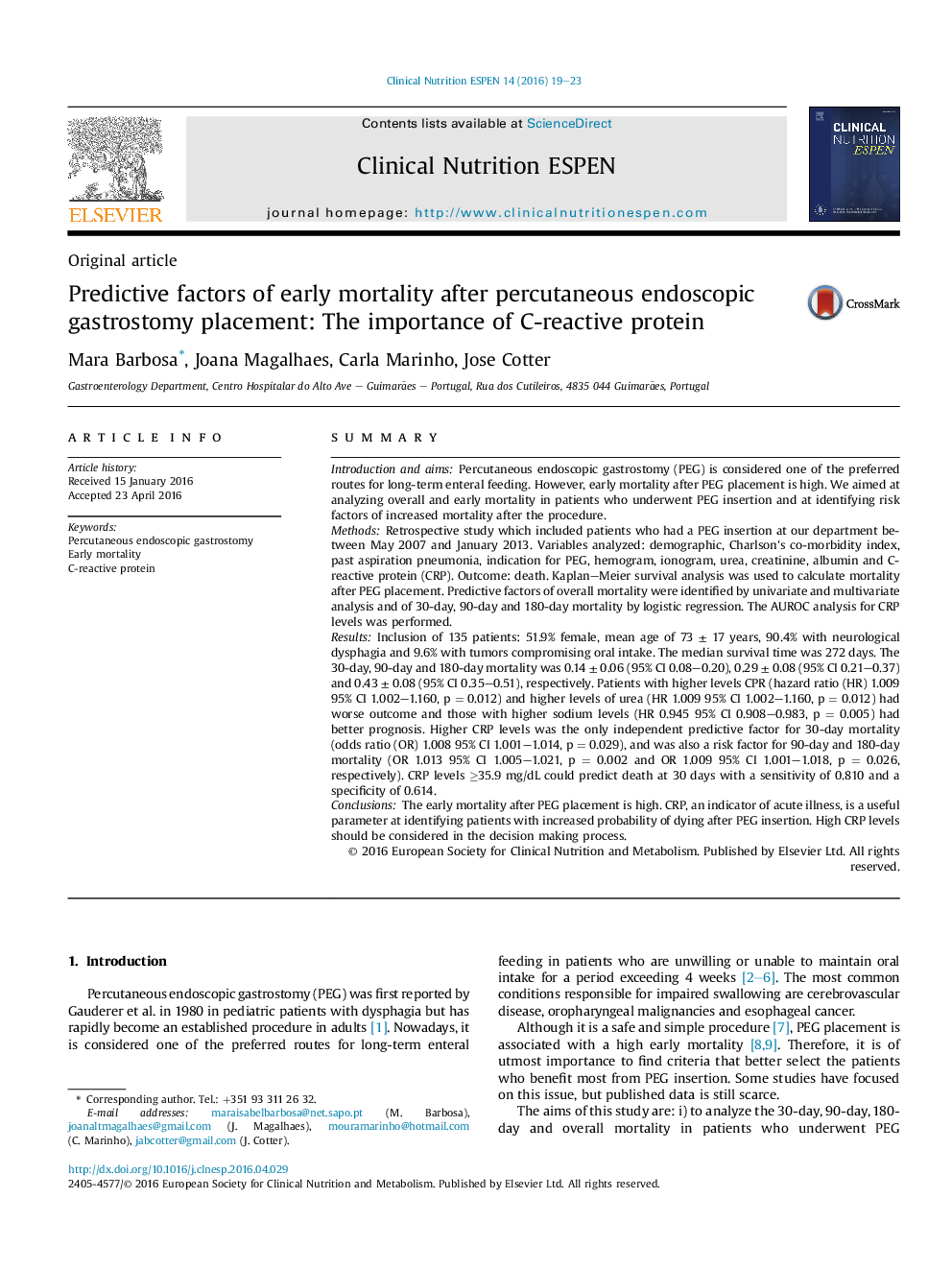| کد مقاله | کد نشریه | سال انتشار | مقاله انگلیسی | نسخه تمام متن |
|---|---|---|---|---|
| 2685857 | 1564725 | 2016 | 5 صفحه PDF | دانلود رایگان |
SummaryIntroduction and aimsPercutaneous endoscopic gastrostomy (PEG) is considered one of the preferred routes for long-term enteral feeding. However, early mortality after PEG placement is high. We aimed at analyzing overall and early mortality in patients who underwent PEG insertion and at identifying risk factors of increased mortality after the procedure.MethodsRetrospective study which included patients who had a PEG insertion at our department between May 2007 and January 2013. Variables analyzed: demographic, Charlson's co-morbidity index, past aspiration pneumonia, indication for PEG, hemogram, ionogram, urea, creatinine, albumin and C-reactive protein (CRP). Outcome: death. Kaplan–Meier survival analysis was used to calculate mortality after PEG placement. Predictive factors of overall mortality were identified by univariate and multivariate analysis and of 30-day, 90-day and 180-day mortality by logistic regression. The AUROC analysis for CRP levels was performed.ResultsInclusion of 135 patients: 51.9% female, mean age of 73 ± 17 years, 90.4% with neurological dysphagia and 9.6% with tumors compromising oral intake. The median survival time was 272 days. The 30-day, 90-day and 180-day mortality was 0.14 ± 0.06 (95% CI 0.08–0.20), 0.29 ± 0.08 (95% CI 0.21–0.37) and 0.43 ± 0.08 (95% CI 0.35–0.51), respectively. Patients with higher levels CPR (hazard ratio (HR) 1.009 95% CI 1.002–1.160, p = 0.012) and higher levels of urea (HR 1.009 95% CI 1.002–1.160, p = 0.012) had worse outcome and those with higher sodium levels (HR 0.945 95% CI 0.908–0.983, p = 0.005) had better prognosis. Higher CRP levels was the only independent predictive factor for 30-day mortality (odds ratio (OR) 1.008 95% CI 1.001–1.014, p = 0.029), and was also a risk factor for 90-day and 180-day mortality (OR 1.013 95% CI 1.005–1.021, p = 0.002 and OR 1.009 95% CI 1.001–1.018, p = 0.026, respectively). CRP levels ≥35.9 mg/dL could predict death at 30 days with a sensitivity of 0.810 and a specificity of 0.614.ConclusionsThe early mortality after PEG placement is high. CRP, an indicator of acute illness, is a useful parameter at identifying patients with increased probability of dying after PEG insertion. High CRP levels should be considered in the decision making process.
Journal: Clinical Nutrition ESPEN - Volume 14, August 2016, Pages 19–23
